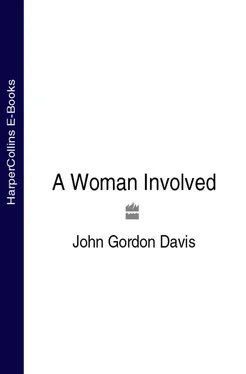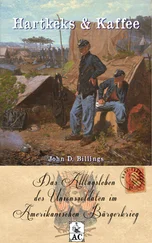JOHN GORDON DAVIS
A Woman Involved

HarperCollins Publishers
1 London Bridge Street
London SE1 9GF
www.harpercollins.co.uk
First published in Great Britain by HarperCollins Publishers 1987
This edition 2014
Copyright © John Gordon Davis 1987
John Gordon Davis asserts the moral right to be identified as the author of this work
A catalogue record for this book is available from the British Library
This novel is entirely a work of fiction. The names, characters and incidents portrayed in it are the work of the author’s imagination. Any resemblance to actual persons, living or dead, events or localities is entirely coincidental.
All rights reserved under International and Pan-American Copyright Conventions. By payment of the required fees, you have been granted the nonexclusive, nontransferable right to access and read the text of this e-book on-screen. No part of this text may be reproduced, transmitted, downloaded, decompiled, reverse-engineered, or stored in or introduced into any information storage and retrieval system, in any form or by any means, whether electronic or mechanical, now known or hereafter invented, without the express written permission of HarperCollins e-books.
HarperCollins Publishers has made every reasonable effort to ensure that any picture content and written content in this ebook has been included or removed in accordance with the contractual and technological constraints in operation at the time of publication.
Source ISBN: 9780007574438
Ebook Edition © FEBRUARY 2015 ISBN: 9780008125370
Version: 2015-02-11
To Minna and Max Lucas
Cover
Title Page
Copyright
Dedication
Volume 1
Part One
Chapter 1
Chapter 2
Chapter 3
Chapter 4
Chapter 5
Chapter 6
Part Two
Chapter 7
Chapter 8
Part Three
Chapter 9
Chapter 10
Chapter 11
Chapter 12
Chapter 13
Chapter 14
Chapter 15
Chapter 16
Chapter 17
Chapter 18
Chapter 19
Chapter 20
Chapter 21
Part Four
Chapter 22
Chapter 23
Chapter 24
Chapter 25
Part Five
Chapter 26
Chapter 27
Chapter 28
Chapter 29
Chapter 30
Chapter 31
Volume II
Part Six
Chapter 32
Chapter 33
Chapter 34
Chapter 35
Chapter 36
Chapter 37
Chapter 38
Part Seven
Chapter 39
Chapter 40
Chapter 41
Chapter 42
Chapter 43
Chapter 44
Chapter 45
Chapter 46
Chapter 47
Part Eight
Chapter 48
Chapter 49
Chapter 50
Part Nine
Chapter 51
Chapter 52
Chapter 53
Chapter 54
Chapter 55
Chapter 56
Chapter 57
Part Ten
Chapter 58
Chapter 59
Chapter 60
Keep Reading
About the Author
About the Publisher
VOLUME 1
Rome, 1978
‘Who murdered you?’ people cried at the corpse.
There was no autopsy to find out why he died. Yet he had been in excellent health. No death certificate was ever published. And when he was embalmed, within twelve hours of his death, the morticians were forbidden to draw one drop of blood off his body. For three days Pope John Paul I lay in state in the Basilica of Saint Peter’s, and thousands of people filed past the coffin to pay their last homage to the Pope who had reigned for only thirty-three days. At seven o’clock on the third day the doors of Saint Peter’s were closed, and the body lay in flickering candlelight for the last night, Swiss guards standing vigil at each corner of the catafalque. But at seven-thirty, through a side door, entered some more pilgrims. They came from the Pope’s birthplace, and they had received special permission to come late to pay their last respects. They began to file past the body, mourning. Then something strange happened.
Suddenly a group of Vatican officials and doctors appeared. The pilgrims were told to leave immediately. They did so, bewildered. Then the Swiss guards were ordered to leave. Then big crimson screens were erected around the body, so that nobody who had chanced to hide inside the massive basilica could see what was happening. The officials and the doctors began an examination of the Pope’s body, behind the screens.
The examination lasted one and a half hours. The press demanded to know whether this had been a belated autopsy, but the Vatican announced that it had been a routine examination, lasting only twenty minutes, by the morticians and a professor of medicine to check on the state of preservation of the body.
But neither the morticians nor the professor were even present.
Rome, May 1980
He was probably the most popular man in the world when they tried to murder him.
There were thousands of people in Saint Peter’s Square to attend the papal audience in front of the basilica. At about five pm Pope John Paul II appeared in his popemobile and a roar went up from the crowd. He stood in his vehicle, beaming, dressed in white, his arms outstretched, waving and leaning out to touch people as he rode slowly between them. Then suddenly the shocking shots rang out.
They were fired from seven feet away. Two bullets struck Pope John Paul II in the abdomen, three more grazed him. He clutched himself and lurched, then he fell back into the arms of his private secretary. There was pandemonium. The screams from the crowd, the shock, the horror, the surging. A young man was trying to race away, dodging and shoving, but within moments outraged people overwhelmed him.
He was a Turk. His name was Mehmet Ali Agca, and he claimed he had been hired by the Bulgarian secret service to assassinate the Pope.
Falkland Islands, 1982
It was bitterly cold. The windswept South Atlantic was icy. On the archipelago of hard, bleak islands the Royal Marines were outfighting the Argentinian soldiers who had invaded the far-flung British colony. But it was in the skies that the outcome of this war could be determined, since the British forces were over seven thousand miles from home and their troop ships and lines of supply were very vulnerable to aerial attack.
The fighter plane of the Argentinian Air Force came screaming out of the bleak west, and suspended under its wings were deadly exocet missiles. Out on the black ocean the British warship steamed towards the rocky beaches. When the Argentinian aircraft was still miles away from the ship the pilot pressed the button and the exocet’s rocket fired, and it unleashed itself.
The rocket went streaking over the sea, its electronic equipment unerringly telling it where to go, homing in on the man’o’war. On board the British warship they hardly knew what hit them.
It hit them with a mighty blinding crash that rent through the ship, steel and machinery flying midst flesh and blood and bone, and within minutes the ship was engulfed in terrible fire and killer smoke, and men were jumping into the freezing sea to escape the flames.
London, 18th June 1982
It was before dawn when they found him.
The man hung from the ironwork of Blackfriars Bridge, his arms limp by his side, the rope gouging into his neck. He was podgy and smallish, with a bristling black moustache and black, thinning hair. His eyes were bulging, and he was very dead. The police hauled him up, and when they searched through his well-cut suit, they found ten kilos of bricks in his pockets, and over fifteen thousand dollars in cash.
Читать дальше













